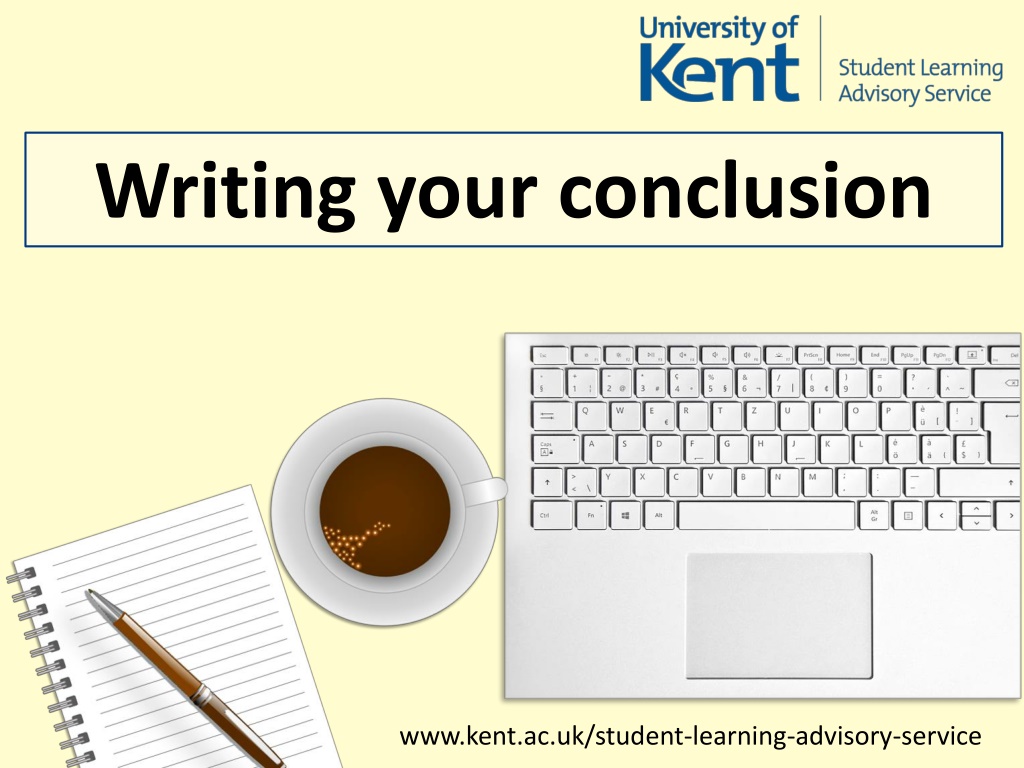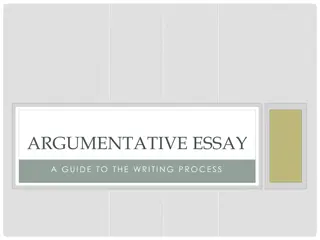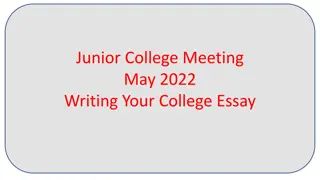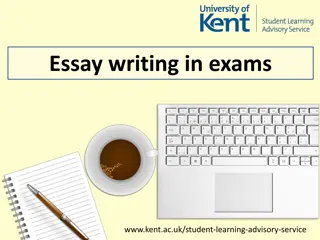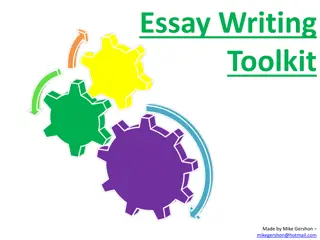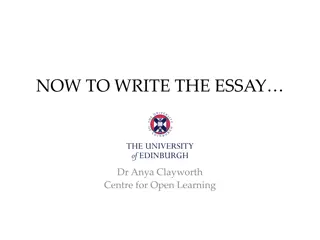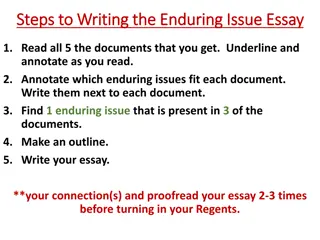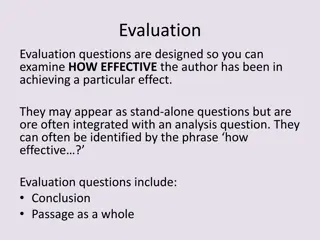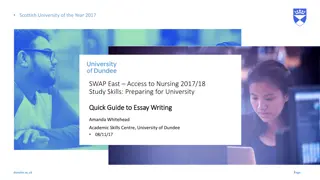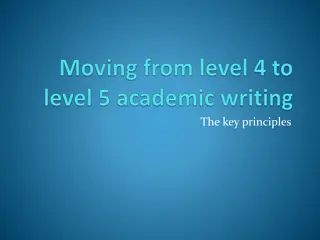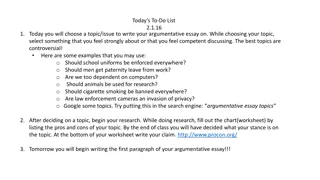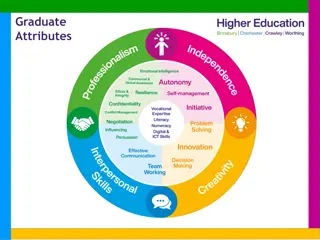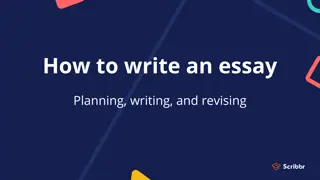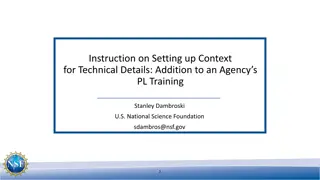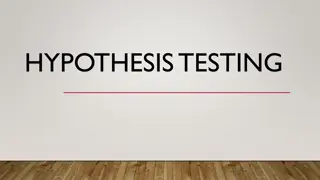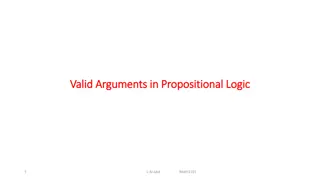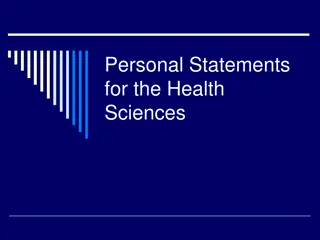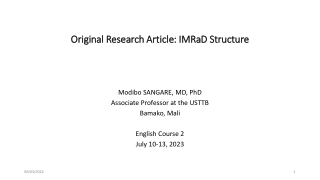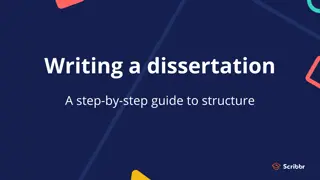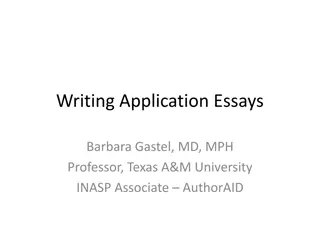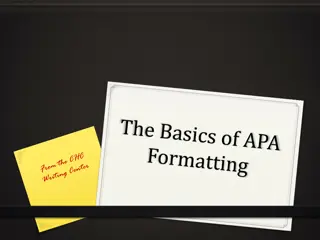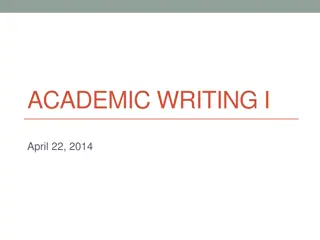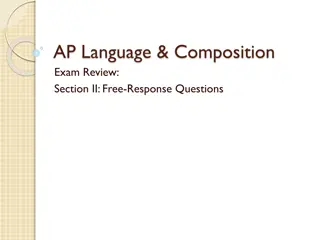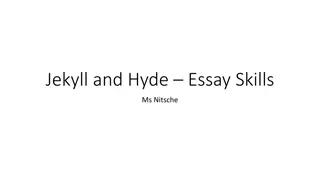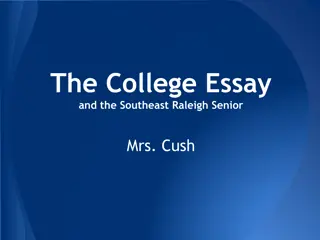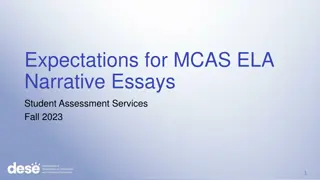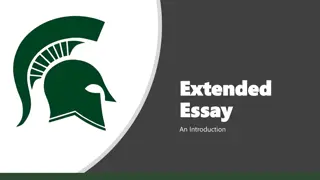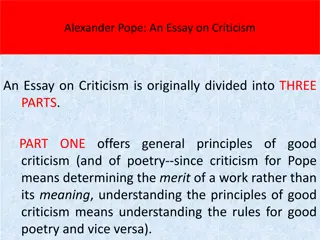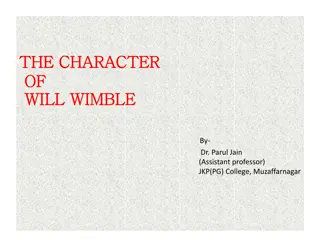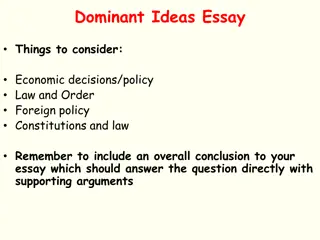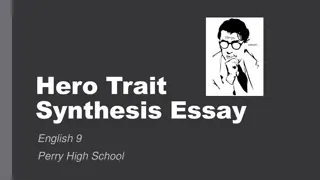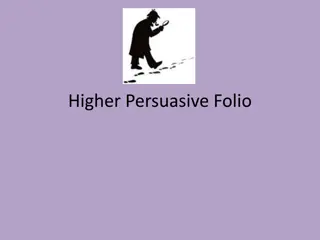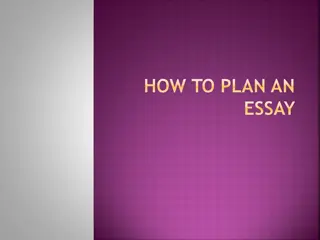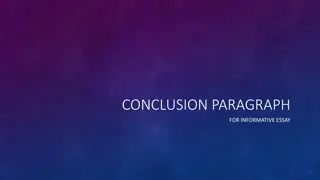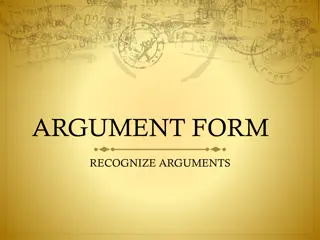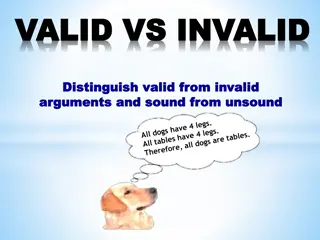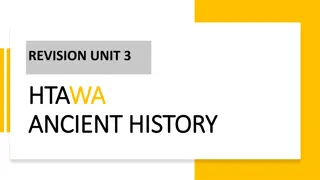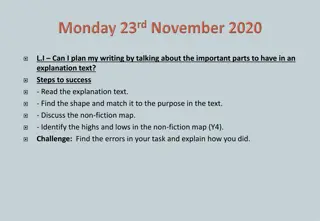Structuring Your Essay Conclusion Effectively
Understand the importance of essay conclusions, learn how to structure a conclusion, identify key elements of a good conclusion, reiterate the question, summarize main points, present conclusions or hypotheses, and ensure the question is answered with supporting evidence.
Download Presentation

Please find below an Image/Link to download the presentation.
The content on the website is provided AS IS for your information and personal use only. It may not be sold, licensed, or shared on other websites without obtaining consent from the author. Download presentation by click this link. If you encounter any issues during the download, it is possible that the publisher has removed the file from their server.
E N D
Presentation Transcript
Writing your conclusion www.kent.ac.uk/student-learning-advisory-service
Writing your conclusion Writing your conclusion By the end of this session you will: 1. Understand the point of conclusions 2. Be able to generate questions which help structure a conclusion 3. Recognise the key elements which make a good conclusion
Writing your conclusion Writing your conclusion 5-10% Introduction Essay Body 80-90% Essay of 3,000 words = approximately 150-300 word introduction Conclusion 5-10%
Writing your conclusion Writing your conclusion 5-10% Introduction Essay Body 80-90% Reiteration of question Summary of main points raised Conclusion/hypothesis Closing statement Conclusion 5-10%
Reiteration of question Reiteration of question Remind reader of what you were attempting to answer e.g. This essay set out to examine and evaluate two academic forms of writing: essays and reports. The evaluation was approached in terms of their purpose, form and content.
Summary of main points raised Summary of main points raised Gather together all points made within the essay and identify the most important point or where the balance of evidence falls, ensure this is answering the essay question e.g. From the evidence of writers offering advice on correct academic writing, and observation of common practice among academics and students, it is clear that essays are used to show how a student can understand existing knowledge in their discipline and use this to draw their own conclusions. Academic style requires a fixed structure of introduction, main body and conclusion. However, the manner in which the topic is dealt with depends on the process of the question or title being tackled. Conversely, reports are used to give evidence on research on a restricted topic. They are written to allow selective reading, a process that is aided by a fixed structure including sections with headings and subheadings.
Conclusion/hypothesis Conclusion/hypothesis Make sure that you have answered the question Highlight this to your reader by using words from the essay question Ensure you justify your answer by pointing to evidence you have previously analyse E.g. From this examination, it has been shown that essays and reports are distinctly different. It has also been explained that they are well-suited to giving evidence of different learning processes.
Closing statement Closing statement Say what has been learned as a result of writing the essay Indicate what still needs further research or which questions are still unresolved Identify the most important point you have made add a comment on this E.g. What may need to be considered, but is beyond the scope of this essay, is whether it is sufficient to summatively assess these two types of learning or whether other forms of assessment, for instance learning journals or student portfolios, may be required as well in order to allow for formative assessment evidencing other forms of learning and taking greater consideration of the learning processes involved.
Example: reiterate question; summary of main points; conclusion/hypothesis; closing statement This essay set out to examine and evaluate two academic forms of writing: essays and reports. The evaluation was approached in terms of their purpose, form and content. From the evidence of writers offering advice on correct academic writing, and observation of common practice among academics and students, it is clear that essays are used to show how a student can understand existing knowledge in their discipline and use this to draw their own conclusions. Academic style requires a fixed structure of introduction, main body and conclusion. However, the manner in which the topic is dealt with depends on the process of the question or title being tackled. Conversely, reports are used to give evidence on research on a restricted topic. They are written to allow selective reading, a process that is aided by a fixed structure including sections with headings and subheadings. From this examination, it has been shown that essays and reports are distinctly different. It has also been explained that they are well-suited to giving evidence of different learning processes. What may need to be considered, but is beyond the scope of this essay, is whether it is sufficient to summatively assess these two types of learning or whether other forms of assessment, for instance learning journals or student portfolios, may be required as well in order to allow for formative assessment evidencing other forms of learning and taking greater consideration of the learning processes involved.
Nothing new Nothing new Sometimes new ideas or new reading occurs just before you finish your essay. Do not be tempted just to squash it into the conclusion If the new material is important enough, it will need to be included into the main essay as a distinct point or paragraph
Writing Conclusions Writing Conclusions You should now: Understand the point of conclusions Be able to generate questions which help structure a conclusion Recognise the key elements which make a good conclusion If there s anything you don t understand please book an appointment, or contact us at learning@kent.ac.uk
Get in touch Get in touch SLAS CONNECT To book an appointment: www.kent.ac.uk/student-learning-advisory-service learning@kent.ac.uk SLASkent KentUniSLAS SLASkent
